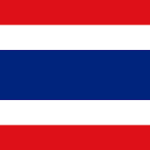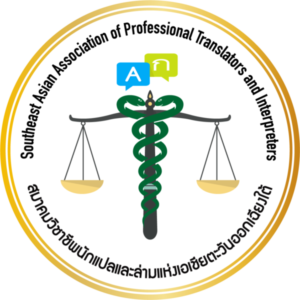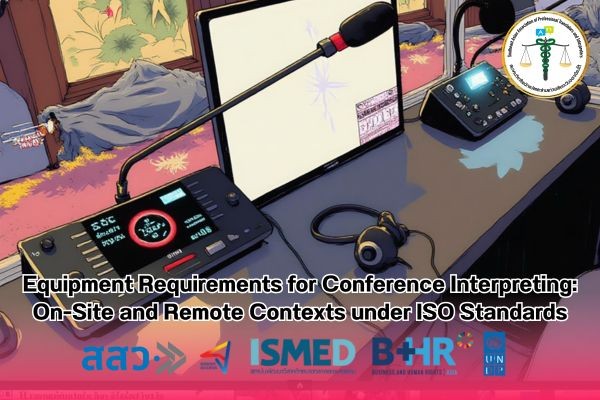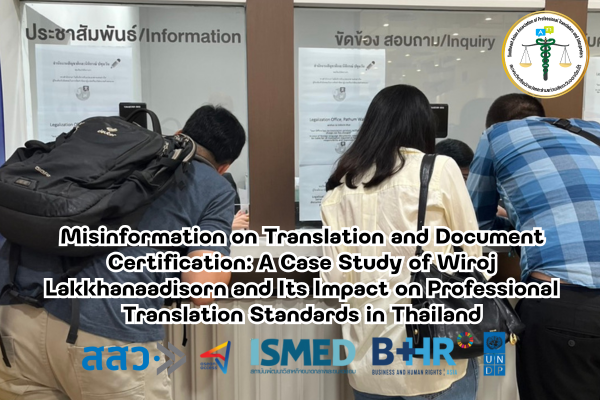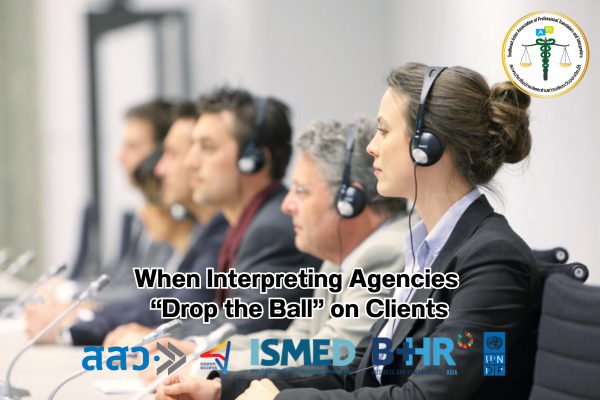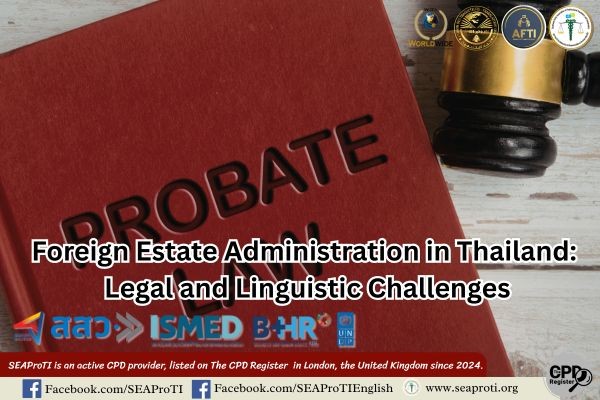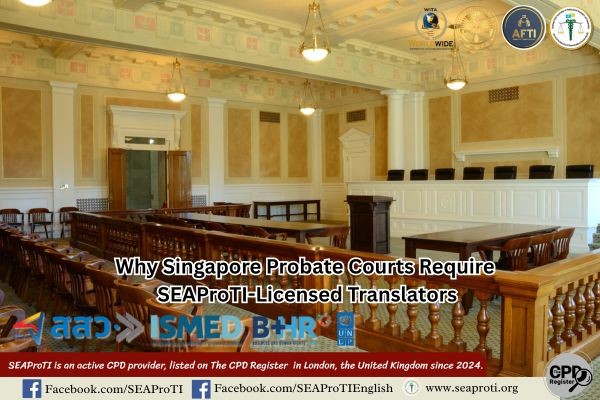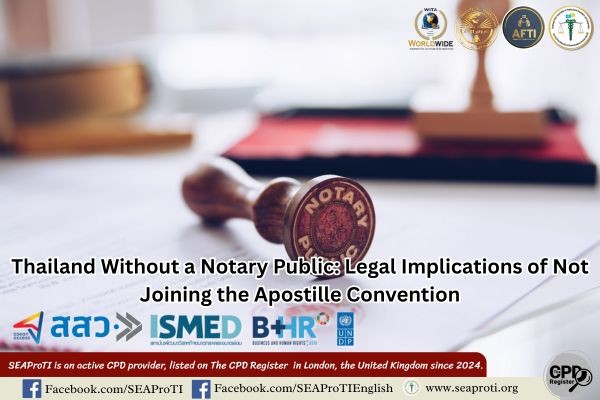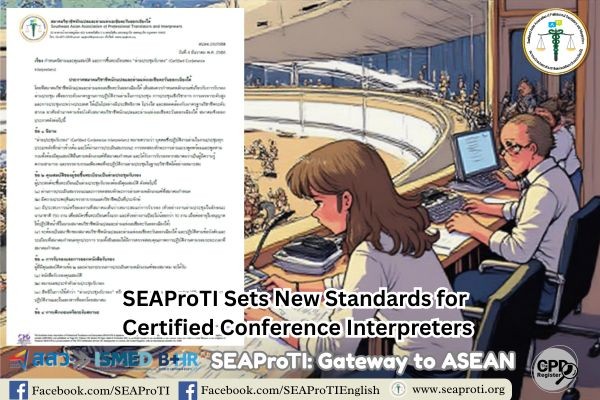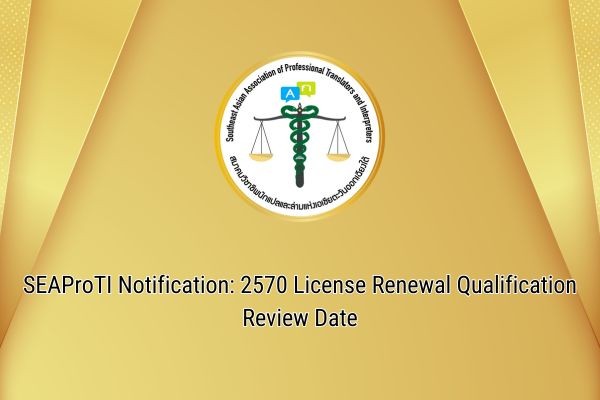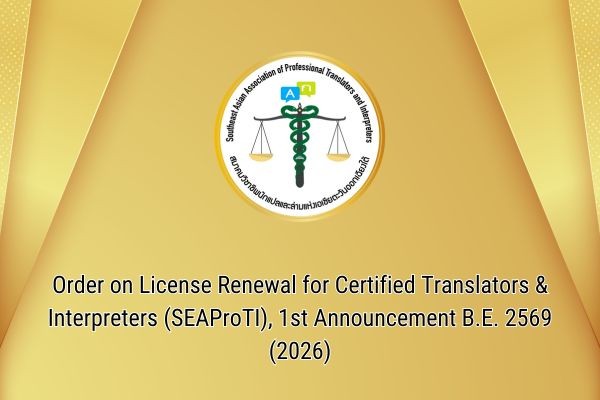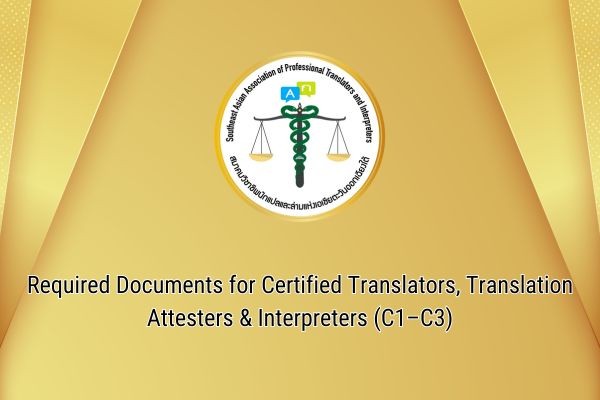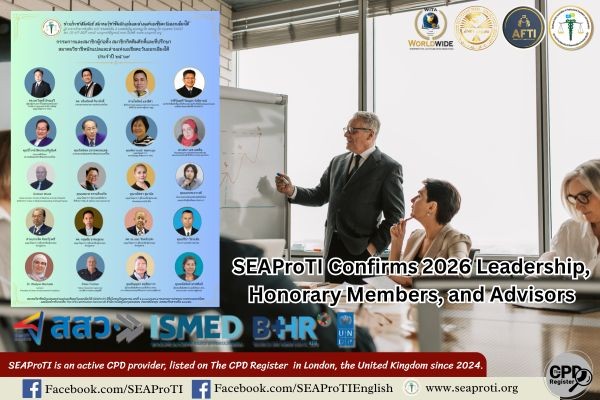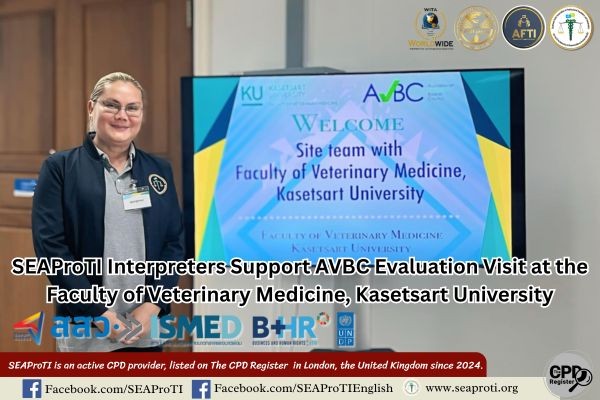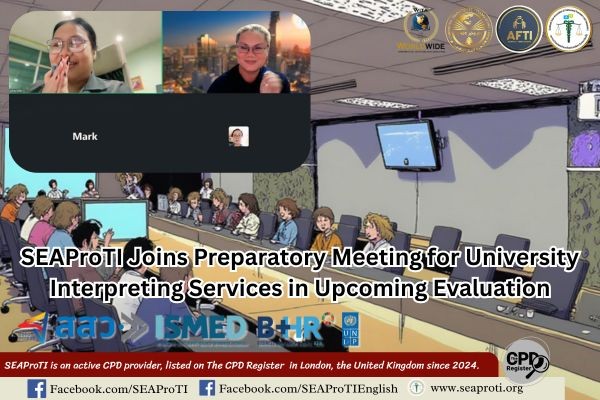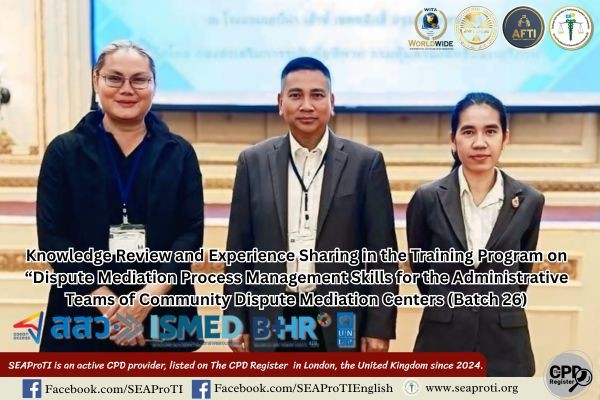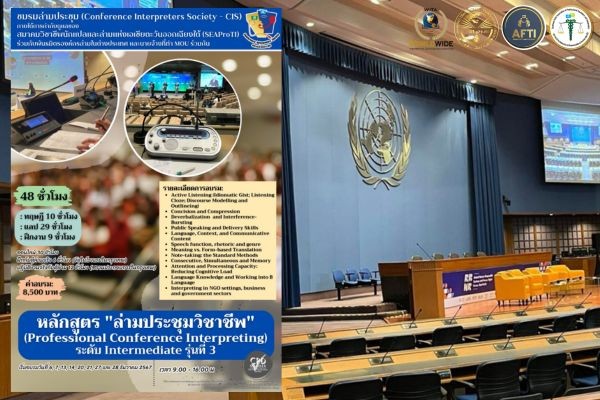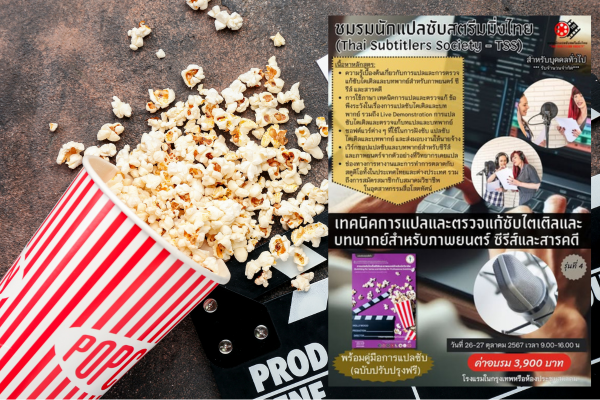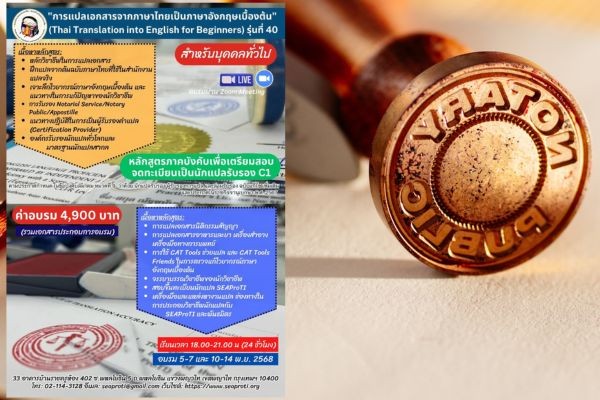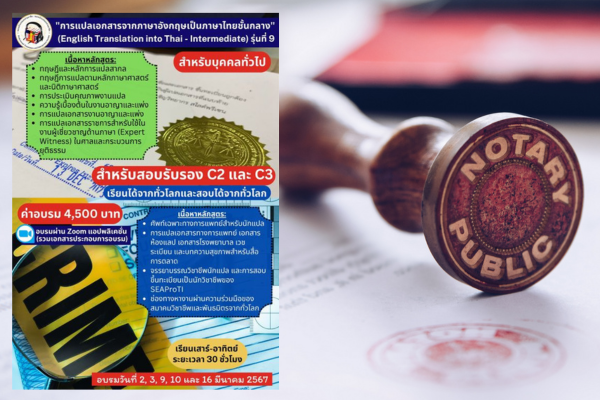Equipment Requirements for Conference Interpreting: On-Site and Remote Contexts under ISO Standards
18 August 2025, Bangkok – The use of simultaneous interpreting (SI) in international conferences and meetings requires specialized equipment that meets technical, ergonomic, and quality standards. This article examines the equipment requirements for both on-site and remote conference interpreting, drawing on the latest International Organization for Standardization (ISO) standards. By analyzing ISO 2603:2016, ISO 4043:2016, ISO 20109:2016, ISO 20108:2017, and ISO 24019:2022, the article highlights best practices in booth design, interpreter consoles, sound transmission, and delivery platforms. It also underscores the centrality of sound quality as a determinant of interpreter performance and participant satisfaction.
Introduction
Simultaneous interpreting is a cognitively demanding profession that depends on reliable and ergonomic equipment. The International Organization for Standardization (ISO) has developed several standards to guide the design, installation, and operation of simultaneous interpreting equipment. These standards cover both on-site settings (permanent and mobile booths) and remote interpreting platforms. This article explores these standards and outlines general principles and key technical requirements for the profession.
- ISO Standards for Simultaneous Interpreting
- ISO 2603:2016 – Permanent Booths
Permanent booths are designed to ensure acoustic separation, two-way communication with the conference hall, and a comfortable working environment. The standard provides guidance on booth location, visibility, noise insulation, lighting, heating, and ventilation (ISO, 2016a).
ISO 4043:2016 – Mobile Booths
Mobile booths address the same acoustic and ergonomic requirements but emphasize portability and ease of assembly. The booths must be lightweight yet sturdy, and positioned in a way that optimizes visibility and minimizes noise disturbance (ISO, 2016b).
ISO 20109:2016 – Equipment
This standard specifies requirements for interpreting consoles, microphones, and headphones. It emphasizes sound quality, hearing protection, and the standardization of console dimensions and functionalities. Combined with ISO 20108, it ensures fidelity of sound and image transmission (ISO, 2016c).
ISO 20108:2017 – Quality and Transmission of Sound and Image
ISO 20108:2017 addresses the quality and preservation of original input, including sound fidelity and image synchronization. It requires systems to avoid distortions and to provide interpreters with clear, synchronized audio-visual feeds (ISO, 2017).
ISO 24019:2022 – Remote Delivery Platforms
With the rise of remote interpreting, ISO 24019:2022 sets standards for online platforms, covering sound and image delivery, interpreters’ interfaces, and internet connectivity. The standard requires platforms to faithfully reproduce original signals and ensure real-time synchronization (ISO, 2022).
General Principles of Equipment Use
Sound quality remains the most important factor in successful simultaneous interpreting. Consoles must separate listening and speaking controls, provide easy access to frequently used buttons (microphone on/off, tone control), and offer multiple incoming and outgoing channels. Poorly designed systems create long-term obstacles for interpreters and diminish audience experience (AIIC, 2021).
Microphones
Each interpreter should have an individual microphone, preferably mounted with a flexible stem to allow ergonomic positioning. Microphones must include an easily distinguishable on/off switch and a visible “microphone-on” light.
Headphones
Headphones must be lightweight, high-quality, and designed specifically for interpreters. In-ear models and journalist-style headsets are not recommended. Headphones should reproduce a wide frequency range without distortion and provide hearing protection against loud signals.
Importance of Sound
Good sound quality reduces fatigue and stress. Proper room acoustics, distributed loudspeakers, and avoidance of excessive digital processing (DSPs, compressors, noise gates) are essential. Systems should prioritize clarity and fidelity over cosmetic enhancements.
Discussion
The evolution of interpreting technology reflects both ergonomic concerns and technological innovation. While permanent and mobile booths remain essential for on-site conferences, the COVID-19 pandemic accelerated the adoption of remote simultaneous interpreting (RSI) platforms. ISO 24019:2022 now provides interpreters, conference organizers, and equipment suppliers with benchmarks for quality assurance in RSI. Ultimately, adherence to ISO standards benefits not only interpreters but also institutions that depend on accurate multilingual communication.
Conclusion
Simultaneous interpreting requires sophisticated equipment aligned with international standards. From booth design to sound systems and online platforms, ISO standards serve as benchmarks that protect interpreters’ health, ensure quality communication, and safeguard the listening experience of conference participants. Compliance with these standards should be prioritized by governments, institutions, and private organizers alike.
References
- AIIC. (2021). Technical and Health Committee: Equipment for Simultaneous Interpreting. International Association of Conference Interpreters. https://aiic.org
- International Organization for Standardization. (2016a). ISO 2603:2016 – Simultaneous interpreting — Permanent booths — Requirements. ISO.
- International Organization for Standardization. (2016b). ISO 4043:2016 – Simultaneous interpreting — Mobile booths — Requirements. ISO.
- International Organization for Standardization. (2016c). ISO 20109:2016 – Simultaneous interpreting — Equipment — Requirements. ISO.
- International Organization for Standardization. (2017). ISO 20108:2017 – Simultaneous interpreting — Quality and transmission of sound and image input — Requirements. ISO.
- International Organization for Standardization. (2022). ISO 24019:2022 – Simultaneous interpreting delivery platforms — Requirements and recommendations. ISO.
The Southeast Asian Association of Professional Translators and Interpreters (SEAProTI) has announced the qualifications and requirements for individuals registered as Certified Translators, Translation Certification Providers, and Certified Interpreters of the Association, as stated in Chapter 9 and Chapter 10 of the Royal Gazette of the Secretariat of the Cabinet, Office of the Prime Minister of the Kingdom of Thailand, dated July 25, 2024, Volume 141, Part 66 Ngor, p. 100. Full details can be accessed at: The Royal Thai Government Gazette
SEAProTI is the first professional association in Thailand and Southeast Asia to establish a certification system for Certified Translators, Translation Certification Providers, and Certified Interpreters.
Head Office: Baan Ratchakru Building, Room 402, No. 33, Soi Phahonyothin 5, Phahonyothin Road, Phayathai District, Bangkok 10400
Email: hello@seaproti.com Telephone: (+66) 2-114-3128 (Business hours: Monday–Friday, 9:00 a.m.–5:00 p.m.)
บทนำ
การล่ามแบบพูดพร้อมเป็นงานที่ต้องใช้สมาธิและทักษะอย่างสูง และขึ้นอยู่กับอุปกรณ์ที่มีความน่าเชื่อถือและถูกออกแบบตามหลักการยศาสตร์ เพื่อให้การสื่อสารหลายภาษาราบรื่น องค์การมาตรฐานระหว่างประเทศ (ISO) ได้กำหนดมาตรฐานหลายฉบับสำหรับการออกแบบ การติดตั้ง และการใช้งานอุปกรณ์ล่ามพูดพร้อม ครอบคลุมทั้ง การประชุมในสถานที่ (บูธถาวรและบูธเคลื่อนที่) และ การประชุมออนไลน์/ทางไกล บทความนี้จะวิเคราะห์มาตรฐานดังกล่าวพร้อมนำเสนอข้อกำหนดและหลักการสำคัญสำหรับวิชาชีพล่าม
มาตรฐาน ISO สำหรับการล่ามพูดพร้อม
บูธล่ามถาวรต้องมีการ แยกเสียง (acoustic separation) การสื่อสารสองทางกับห้องประชุม และสภาพแวดล้อมการทำงานที่เอื้อต่อสมาธิ ข้อกำหนดสำคัญ ได้แก่ ตำแหน่งบูธในห้องเพื่อการมองเห็นที่ดี การป้องกันเสียงรบกวน การจัดแสงสว่าง การระบายอากาศ และความสะดวกสบาย (ISO, 2016a)
ISO 4043:2016 – บูธเคลื่อนที่ (Mobile Booths)
บูธเคลื่อนที่ต้องคงมาตรฐานด้านการแยกเสียงและความสะดวกสบายเช่นเดียวกับบูธถาวร แต่เพิ่มข้อกำหนดเรื่อง การเคลื่อนย้ายและการติดตั้ง บูธต้องมีน้ำหนักเบา แข็งแรง และจัดวางในตำแหน่งที่เหมาะสมเพื่อหลีกเลี่ยงเสียงรบกวน (ISO, 2016b)
ISO 20109:2016 – อุปกรณ์ (Equipment)
มาตรฐานนี้กำหนดข้อกำหนดด้านคอนโซล ไมโครโฟน และหูฟัง โดยเน้น คุณภาพเสียง ความชัดเจน การป้องกันการได้ยิน และการมาตรฐานขนาด/ฟังก์ชันของคอนโซล ร่วมกับ ISO 20108:2017 เพื่อให้มั่นใจว่าการส่งเสียงและภาพมีคุณภาพ (ISO, 2016c)
ISO 20108:2017 – คุณภาพเสียงและภาพ (Quality and Transmission)
กำหนดให้ระบบล่ามต้อง รักษาคุณภาพต้นฉบับสูงสุด ทั้งเสียงและภาพ โดยไม่มีการบิดเบือน รวมถึงการซิงโครไนซ์ระหว่างภาพและเสียง (ISO, 2017)
ISO 24019:2022 – แพลตฟอร์มล่ามพูดพร้อมทางไกล (Remote SI Platforms)
มาตรฐานฉบับนี้เกิดขึ้นจากการขยายตัวของการล่ามออนไลน์ โดยกำหนดข้อกำหนดด้าน แพลตฟอร์มดิจิทัล ครอบคลุมการส่งเสียงและภาพ อินเทอร์เฟซของล่าม (soft consoles) และการเชื่อมต่ออินเทอร์เน็ต ต้องสามารถส่งสัญญาณที่เที่ยงตรงและไม่ลดทอนคุณภาพ (ISO, 2022)
หลักการทั่วไปของการใช้อุปกรณ์
คุณภาพเสียงเป็นหัวใจหลักของการล่ามพูดพร้อม คอนโซลต้องออกแบบให้ปุ่มควบคุมการฟังและการพูดแยกออกจากกันชัดเจน ใช้งานง่าย และมีช่องสัญญาณเพียงพอ หากอุปกรณ์ไม่ได้มาตรฐานจะส่งผลเสียระยะยาวทั้งต่อล่ามและผู้ฟัง (AIIC, 2021)
ไมโครโฟน
ล่ามแต่ละคนต้องมีไมโครโฟนส่วนตัว โดยควรเป็นไมค์ที่ปรับได้ตามสรีระ มีสวิตช์ที่สังเกตง่าย และมีไฟแสดงสถานะเมื่อเปิดใช้งาน
หูฟัง
หูฟังต้องมีคุณภาพสูง น้ำหนักเบา และออกแบบสำหรับล่ามโดยเฉพาะ ไม่ควรใช้แบบ in-ear หรือ headset สำหรับงานสื่อ หูฟังควรถ่ายทอดความถี่เสียงได้ครบถ้วนและมีระบบป้องกันการได้ยินเสียงดังเกินไป
ความสำคัญของเสียง
เสียงที่มีคุณภาพช่วยลดความเครียดและความเหนื่อยล้า ปัจจัยที่เกี่ยวข้อง ได้แก่ อะคูสติกของห้อง ลำโพงกระจายทั่วห้อง และการควบคุมระดับเสียงที่เหมาะสม ควรหลีกเลี่ยงการใช้ DSP หรือ noise gate ที่ทำให้เสียงผิดธรรมชาติ
การอภิปราย
การพัฒนาอุปกรณ์ล่ามสะท้อนถึงทั้ง ความก้าวหน้าทางเทคโนโลยี และ ความห่วงใยด้านการยศาสตร์ ในการประชุม ณ สถานที่จริง บูธถาวรและบูธเคลื่อนที่ยังคงเป็นหัวใจหลัก แต่สถานการณ์การแพร่ระบาด COVID-19 ทำให้การล่ามทางไกล (RSI) เติบโตอย่างรวดเร็ว มาตรฐาน ISO 24019:2022 จึงเป็นแนวทางสำคัญที่ช่วยยกระดับคุณภาพและความน่าเชื่อถือของแพลตฟอร์ม RSI
บทสรุป
การล่ามแบบพูดพร้อมต้องใช้อุปกรณ์ที่ซับซ้อนและได้มาตรฐานสากล เพื่อปกป้องสุขภาพของล่าม คงคุณภาพการสื่อสาร และสร้างประสบการณ์ที่ดีแก่ผู้เข้าร่วมประชุม มาตรฐาน ISO จึงเป็นเกณฑ์ที่ผู้จัดงาน องค์กร และหน่วยงานรัฐควรยึดถือเพื่อให้เกิดความเชื่อมั่นและคุณภาพสูงสุดในการสื่อสารข้ามภาษา
เอกสารอ้างอิง
- AIIC. (2021). Technical and Health Committee: Equipment for Simultaneous Interpreting. International Association of Conference Interpreters. https://aiic.org
- International Organization for Standardization. (2016a). ISO 2603:2016 – Simultaneous interpreting — Permanent booths — Requirements. ISO.
- International Organization for Standardization. (2016b). ISO 4043:2016 – Simultaneous interpreting — Mobile booths — Requirements. ISO.
- International Organization for Standardization. (2016c). ISO 20109:2016 – Simultaneous interpreting — Equipment — Requirements. ISO.
- International Organization for Standardization. (2017). ISO 20108:2017 – Simultaneous interpreting — Quality and transmission of sound and image input — Requirements. ISO.
- International Organization for Standardization. (2022). ISO 24019:2022 – Simultaneous interpreting delivery platforms — Requirements and recommendations. ISO.
เกี่ยวกับนักแปลรับรอง ผู้รับรองการแปล และล่ามรับรองของสมาคมวิชาชีพนักแปลและล่ามแห่งเอเชียตะวันออกเฉียงใต้
สมาคมวิชาชีพนักแปลและล่ามแห่งเอเชียตะวันออกเฉียงใต้ (SEAProTI) ได้ประกาศหลักเกณฑ์และคุณสมบัติผู้ที่ขึ้นทะเบียนเป็น “นักแปลรับรอง (Certified Translators) และผู้รับรองการแปล (Translation Certification Providers) และล่ามรับรอง (Certified Interpreters)” ของสมาคม หมวดที่ 9 และหมวดที่ 10 ในราชกิจจานุเบกษา ของสำนักเลขาธิการคณะรัฐมนตรี ในสำนักนายกรัฐมนตรี แห่งราชอาณาจักรไทย ลงวันที่ 25 ก.ค. 2567 เล่มที่ 141 ตอนที่ 66 ง หน้า 100 อ่านฉบับเต็มได้ที่: นักแปลรับรอง ผู้รับรองการแปล และล่ามรับรอง
*สมาคมวิชาชีพนักแปลและล่ามแห่งเอเชียตะวันออกเฉียงใต้ เป็นสมาคมวิชาชีพแห่งแรกในประเทศไทยและภูมิภาคเอเชียตะวันออกเฉียงใต้ที่มีระบบรับรองนักแปลรับรอง ผู้รับรองการแปล และล่ามรับรอง
สำนักงานใหญ่: อาคารบ้านราชครู เลขที่ 33 ห้อง 402 ซอยพหลโยธิน 5 ถนนพหลโยธิน แขวงพญาไท เขตพญาไท กรุงเทพมหานคร 10400 อีเมล: hello@seaproti.com โทรศัพท์: (+66) 2-114-3128 (เวลาทำการ: วันจันทร์–วันศุกร์ เวลา 9.00–17.00 น.)
